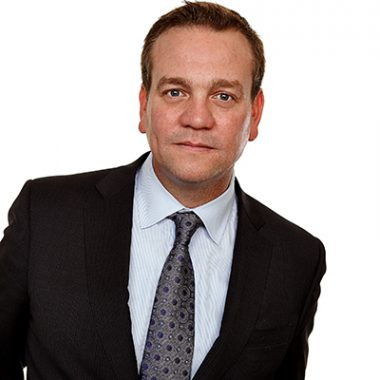Your time is valuable, and so is your client’s. When it’s time to schedule a meeting, it makes sense to ensure that it runs efficiently, so not one second is wasted. Developing a template or checklist for client meetings can help ensure that you hit the most important talking points. Here’s what you might want to include in a financial advisor client meeting agenda.
Are you looking to expand the marketing of your financial advisor practice? Try SmartAsset AMP, a holistic client prospecting and marketing automation platform.
What Is a Financial Advisor Client Meeting Agenda?
Your agenda should address everything you plan to cover during client meetings. This is not to be confused with a discovery checklist, which is what you might put together when meeting with a client or prospect for the first time.
A meeting agenda assumes you’ve already built trust and rapport with a client, so you can focus on what’s most important: advising them on their financial plan.
Why develop an agenda for client meetings? Simply put, it benefits both you and your clients. Having an agenda to follow helps you to:
- Keep the conversation on course and avoid unnecessary detours.
- Prioritize which topics or action items you want to discuss with clients.
- Structure your time so that the meeting doesn’t feel rushed.
- Make tangible connections with clients and demonstrate value.
Sharing the agenda with clients before the meeting allows them to prepare, as well as set accurate expectations about what you’ll cover. It also gives them an opportunity to raise any questions they may have, so you can adjust the agenda to cover them.
By setting an agenda, you can leave the meeting knowing that you’ve tackled the most important topics with your clients. Meanwhile, they leave having had a positive experience, which is key in maintaining their ongoing loyalty and gaining referrals.

Client Acquisition Simplified: For RIAs
- Ideal for RIAs looking to scale.
- Validated referrals to help build your pipeline efficiently.
- Save time + optimize your close rate with high-touch, pre-built campaigns.

CFP®, CEO
Joe Anderson
Pure Financial Advisors
We have seen a remarkable return on investment and comparatively low client acquisition costs even as we’ve multiplied our spend over the years.
Pure Financial Advisors reports $1B in new AUM from SmartAsset investor referrals.
Key Elements of a Financial Advisor Client Meeting Agenda
Ultimately, you have the final say in what to include in your agenda based on the types of clients you serve and their needs. If you advise clients across different niches or backgrounds, you may develop multiple templates that are tailored to each one. Here are some of the elements you may want to include in your financial advisor client meeting agenda:
- Greeting. Before you dive into investments or tax strategies, your clients may appreciate taking a moment or two to catch up. After all, they may have news or milestones to share that could affect their financial plan going forward.
- Review. You’ve likely reviewed the notes from your last meeting already, but it may be helpful to do a brief recap with the client. Don’t spend too much time on this, but do refresh their memories regarding what you discussed last time.
- Main focus. This is the meat of the agenda, and what you cover will depend on the purpose of the meeting. For example, are you meeting for a year-end financial review, a strategy session or is there a specific concern the client wants to address? Defining the meeting’s purpose can help you determine what to discuss.
- Q&A. Near the end of the meeting, allow some time for clients to ask questions. This is a chance for you to offer any necessary clarification and potentially gather information regarding what to cover in your next meeting.
- Wrap up. What do you want your clients to do at the end of the meeting? If there’s a specific call to action you have in mind, add that at the end of your agenda. At the very least, you should be encouraging your clients to schedule their next meeting with you.
Does a client meeting agenda have to follow this exact template? Not at all, but this can be a helpful starting point for developing your template or checklist.
Build a Better RIA
Drive growth with automation, not headcount using the all-in-one advisor marketing platform.

How to Create a Successful Client Meeting Agenda
Developing a client meeting agenda is a straightforward process. Here’s how to craft a guide to client meetings, step by step:
- Define the purpose. A client meeting agenda is worthless if you don’t have a clear idea regarding what the meeting is about. So, first define the purpose of the meeting and why you’re sitting down with the client.
- Pre-meeting prep. Once you understand the purpose of the meeting, you can do some pre-meeting preparation. For example, let’s say a client has scheduled an emergency sit-down because they’re concerned about market volatility. You may prepare for the meeting by reviewing their current asset allocation and overall risk profile, modeling some different scenarios to gauge potential outcomes, and using a portfolio visualizer tool to develop some graphics that illustrate the impact of potential changes.
- Order meeting topics. If you know what you plan to discuss with the client, decide in which order to approach each topic. As you do so, consider the amount of time you’ll allot to this part of the meeting and the importance of each topic to the overall discussion. Start with the more important topics first to ensure you have adequate time for them, and decide how much time to devote to each one.
- Anticipate client questions. You may have a sense of what questions your clients will ask based on your planned agenda. Preparing for those questions before the meeting can help you keep the conversation flowing and demonstrate to the client that you’re attuned to their thoughts and feelings.
- Assign homework to the client. There may be tasks you’d like the client to complete before the meeting. For example, you may want them to document any life changes that have happened since your last meeting, such as a job change or the birth of a child. Giving the client a task or two to complete can help you prepare, as well as encourage them to be more engaged with the planning process.
- Share and adjust. Once you have the agenda down, share it with your client. You can also ask for their feedback if there’s anything they would like to include. If there are changes they would like to make, adjust the agenda and share a revised version.
After the meeting, compare your planned agenda with your meeting notes. That way, you can see if there’s anything that wasn’t covered, so you know what to prioritize for next time.
Bottom Line

Client meetings are integral to what you do as an advisor, and both you and your clients benefit when they run smoothly. Creating a meeting agenda is a way to save time and ensure that you leave no important stones unturned when it’s time to chat with your clients. You can follow a format similar to the one shared here, or develop your own to suit the needs of your clients and your style as an advisor.
Tips for Growing Your Advisory Business
- Increasing your online presence can help you attract more clients, and partnering with an advisor marketing platform is a strategic way to do it. SmartAsset AMP (Advisor Marketing Platform) is a holistic marketing service financial advisors can use for client lead generation and automated marketing. Sign up for a free demo to explore how SmartAsset AMP can help you expand your practice’s marketing operation. Get started today.
- As you draft client meeting agendas, keep accurate records of any communications you have with clients. Recordkeeping is an essential part of compliance, and you’ll want to be sure you’re following both SEC and FINRA requirements. Adding agenda notes to client files through your customer relationship management (CRM) platform is a simple way to ensure you have the appropriate documentation on hand.
Photo credit: ©iStock.com/fizkes, ©iStock.com/Kerkez
